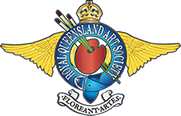TERMS AND CONDITIONS
ENTRY
1.1. Entry fees are not refundable and non-transferrable.
Entry Fees
$35 per artwork
$20 RQAS Brisbane Branch Members
1.2. Entry forms can be completed either:
• on the RQAS website,
• emailed to: entries@rqas.com.au
• or are to be returned to Petrie Terrace Gallery at Unit 3, 162 Petrie Terrace Brisbane.
1.3. The RQAS will email you to confirm if your artwork has been selected as a finalist or not, or if we need further information about your entry. Only finalists will have their work exhibited in the Gallery.
1.4. High Resolution Image(s) of your work must be provided for your entry to be accepted. Images must be submitted as a digital jpeg or png file. Save the file as “yourname_artworktitle”.
1.5. Artists are permitted to enter a maximum of 4 works.
MEDIA
2.1. This exhibition accepts 2D and 3D works in any medium
2.2. This exhibition does not accept entries that were completed in whole or in part by Artificial Intelligence (AI).
ELIGIBILITY
3.1. Artwork must not have been a finalist in an RQAS sponsored competition in the 2 year period prior to entries closing.
3.2. Artwork must be for sale. Artists aged 17yrs or under DO NOT have to list their artwork for sale, but must notify gallery at time of entry.
SIZE:
4.1 Artworks must not exceed 1.5m in width, including frame.
4.2 All works must not weigh more than 15kgs and need to be easily and safely carried by 1 to 2 people.
4.3 May be made up of multiple panels, providing all panels still fit within the size restrictions noted above.
PERMISSIONS & COPYRIGHT:
5.1. Exhibitors agree to grant RQAS a non-exclusive, sub-licensable, worldwide, perpetual and irrevocable license to exercise copyright in your artwork for the purposes of administering, promoting and providing information about the exhibition. This includes producing photographs, catalogues and advertising for promotional purposes
5.2. Entries must be the original work of the exhibitor, and not infringe the copyright, moral rights, or other rights of any third party. Entries should also adhere to Indigenous Cultural and Intellectual Property protocols.
5.3. If you are submitting an artwork of a personality, the entrant must have the subject’s consent to enter the artwork in this exhibition including ensuring they understand the artwork may be displayed to the public.
PRESENTATION
6.1 The work must be suitably presented and ready to be safely displayed with the appropriate hardware (6.3), as well as being clean and dry. Damaged artworks/frames will not be able to be placed on display.
6.2 Any artwork not clean or professionally finished will not be able to be placed on display. Stretched canvas must be square. Refer to framing guidelines.
6.3 Framed artworks and works on canvas (or otherwise mounted) must be ready to hang on the wall using large “D” rings placed approximately 5cm from the top of the frame. Wire or string is not required. Refer to framing guidelines.
6.4 Your artwork must be clearly labelled on the back with your name and contact details.
6.5 Artworks will only be displayed at the absolute discretion of the RQAS Brisbane we will not display any artwork deemed unsafe, offensive, or unsuitable.
6.6 Multi-panelled artworks must include a picture of the assembled work with clear instructions for installation.
6.7 Any questions artists have during installation must be addressed to the Director of Gallery Operations or their representative.
DELIVERY, INSTALLATION & PICK-UP:
7.1 Artists will be notified by email if they are a finalist or not.
7.2 Artworks to be delivered to the Petrie Terrace Gallery on Saturday, 17th January, between 10am – 12pm. If you are not able to deliver at this time, please contact the gallery to make alternative arrangements.
7.3 Entries are accepted, displayed, and returned at the owner’s risk. Freight and insurance are also the owner’s responsibility. All care will be taken, but no responsibility accepted for loss or damage.
7.4 Artworks cannot be delivered by post. A courier can deliver your artwork at the specific delivery times above.
7.5 If you are a finalist and your artwork is not delivered within the times allowed it will not be hung in the exhibition.
7.6 Any questions artists have during installation must be addressed to the Director of gallery operations or their representative.
7.7 Artworks must be made available for the full duration of the exhibition – Wednesday 21st January – Sunday 15th February 2026, and may only be picked up when the exhibition has finished.
7.8 Pick-up of Artworks will be from Petrie Terrace Gallery on Monday 16th February 2026.
7.9 Works not collected within three months of the exhibition closing date may be disposed of at the discretion of the RQAS Brisbane Branch Committee.
SALES
8.1. Artwork must be for sale. Please allow for RQAS commission and any applicable GST when setting price. Artists aged 17yrs or under DO NOT have to list their artwork for sale, but must notify gallery at time of entry.
8.2. The gallery will charge 27.5% commission (including GST) on all sales.
8.3. Artists will be paid for any sales after the end of the exhibition OR when artworks have been paid in full.
EVENTS & PRIZES
9.1. This exhibition is not judged.
9.2. People’s Choice will be awarded at the end of the Exhibition. The winner will receive $100 and a free Membership to RQAS Brisbane Branch for 12 months.
9.3. All entrants and their guests must book into any event associated with the exhibition and purchase a ticket if they wish to attend. Attendance to the exhibition is free outside of ticketed events.
GENERAL
10.1. Should any dispute arise where no specific ruling is laid down the RQAS Brisbane Branch committee’s decision is final.
GALLERY HOURS & CONTACT
10am to 3.30pm Wednesday to Sunday. Closed public holidays.
Phone: 07 3367 1977 Email: gallery@rqas.com.au www.rqas.com.au


